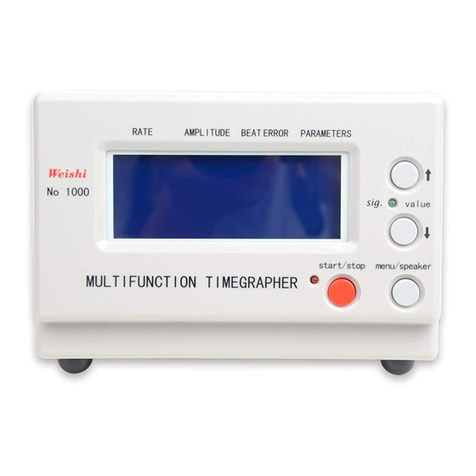
The WeiShi Multifunction Timegrapher
No.1000 User Manual
Table fo Contents
1. INSTRUMENT FUNCTION ................................. 1
2. KEYS AND DISPLAY .................................... 1
2.1 KEY FUNCTION...................................................1
2.2 PARAMETERS AND DISPLAY ...........................................2
2.3 CONNECTION ....................................................3
3. INSTALLATION ........................................ 3
3.1 THE BASIC EQUIPMENT COMPONENTS ....................................3
3.2 EQUIPMENT INSTALLATION ...........................................3
3.2.1 The Power Supply .........................................3
3.2.2 Microphone Connection ....................................4
4. OPERATION ........................................... 4
5. THE USE OF KEYS ..................................... 4
5.1 START/PAUSE KEY ................................................4
5.2 MENU/SPEAKER KEY ...............................................4
5.3 VALUE KEY↓ ...................................................4
5.4 VALUE KEY↑ ...................................................5
6. PARAMETERS .......................................... 5
6.1 BEAT NUMBERS (FREQUENCY NUMBERS) ..................................5
6.2 LIFT ANGLE ....................................................5
6.3 PERIOD........................................................6
7. TECHNICAL DATA ...................................... 6
8. COMMON FAULTS AND HANDLING .......................... 7
8.1 AFTER INSERT THE SOCKET, THE SCREEN IS DARK ..........................7
8.2 THE INSTRUMENT CAN ENTER TESTING STATE WITH THE SOUND OF “DI", BUT AFTER PLACED
THE WATCH ON THE SENSOR, THE INSTRUMENT DO NOT WORK .........................7
8.3 SIGNAL LED IS BRIGHT, BUT THE LINES IS SCATTERED OR OCCUR MANY LINES......7





























